Nationally Designated Important Cultural Property
Arakawa Residence Visit
Apr. May Jun. Jul. Aug. Sep. Oct. Nov. Dec. 2021 Inf.
June
June 22th: Dee
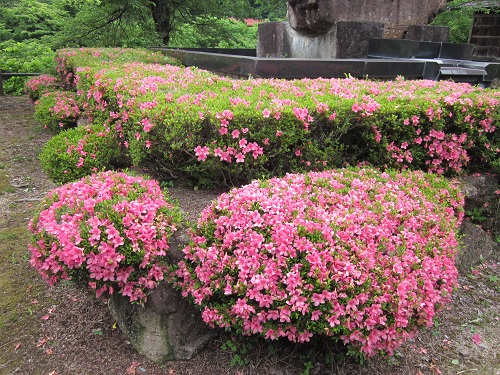 Azalea flowers were blooming beautifully around the monument of spring water
appreciation.
Azalea flowers were blooming beautifully around the monument of spring water
appreciation.
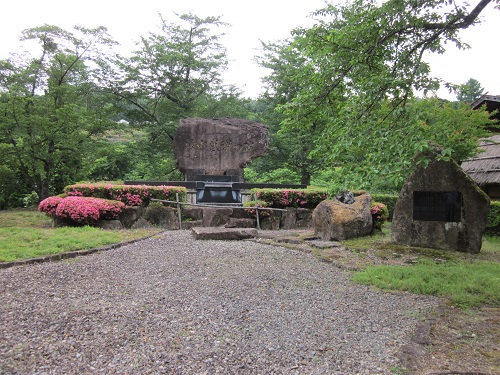 This is a monument of the spring water appreciation to appreciate the water
service of Nyukawa.
This is a monument of the spring water appreciation to appreciate the water
service of Nyukawa.
(For details, please refer to "Information")
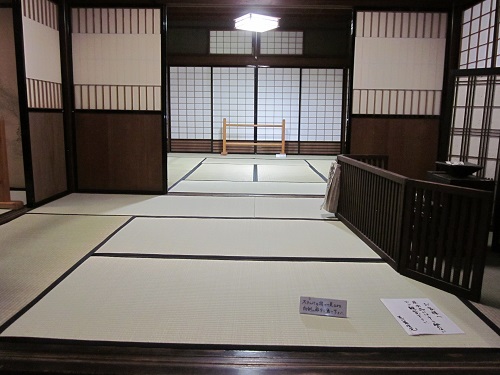 This is Nakanoma with tatami mats (6 tatami mats).
the ceiling is a board and batten ceiling (Saobuchitenjo),
and shoji doors and wooden doors are erected in the partition.
This is Nakanoma with tatami mats (6 tatami mats).
the ceiling is a board and batten ceiling (Saobuchitenjo),
and shoji doors and wooden doors are erected in the partition.
Fence (Komayose) is placed on the right side.
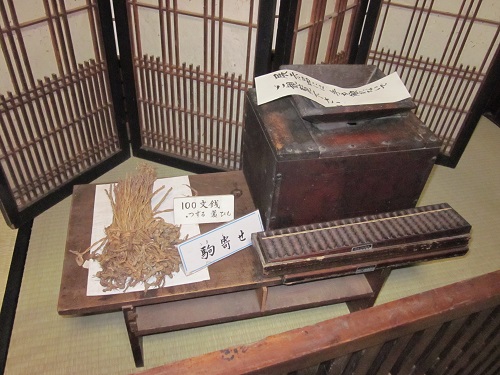 Inside the Fence (Komayose), there is an abacus (one for five balls,
five for one ball), a coin box, and straw strings for hanging 100 coins.
Inside the Fence (Komayose), there is an abacus (one for five balls,
five for one ball), a coin box, and straw strings for hanging 100 coins.
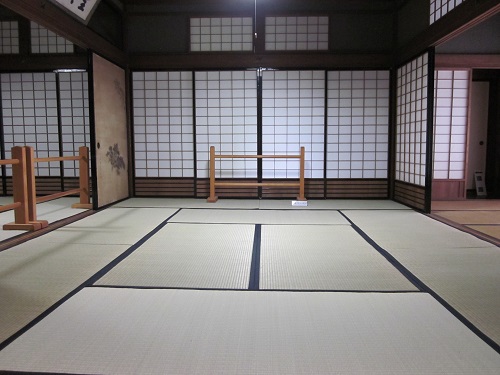 This is a Dee with tatami mats (10 tatami mats).
The ceiling is a board and batten ceiling (Saobuchitenjo),
the transom is a shoji transom (Shojiranma),
and shoji doors and fusuma are erected in the partition.
This is a Dee with tatami mats (10 tatami mats).
The ceiling is a board and batten ceiling (Saobuchitenjo),
the transom is a shoji transom (Shojiranma),
and shoji doors and fusuma are erected in the partition.
Dee was a room to entertain visitors.
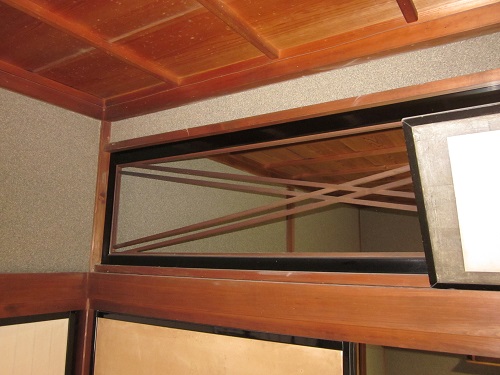 Between the board and batten ceiling (Saobuchitenjo) and the lintel,
there is the transom of four timbers in an X shape.
Between the board and batten ceiling (Saobuchitenjo) and the lintel,
there is the transom of four timbers in an X shape.
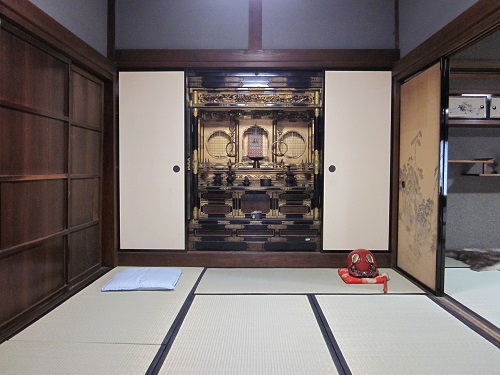 This is Buddhist altar room (Butsuma) with tatami mats (6 tatami mats).
The ceiling is a board and batten ceiling (Saobuchitenjo),
and wooden doors,fusuma and shoji doors are erected in the partition.
A Buddhist altar is enshrined in front.
This is Buddhist altar room (Butsuma) with tatami mats (6 tatami mats).
The ceiling is a board and batten ceiling (Saobuchitenjo),
and wooden doors,fusuma and shoji doors are erected in the partition.
A Buddhist altar is enshrined in front.
The Soto sect (Sotoshu) is believed in this area.
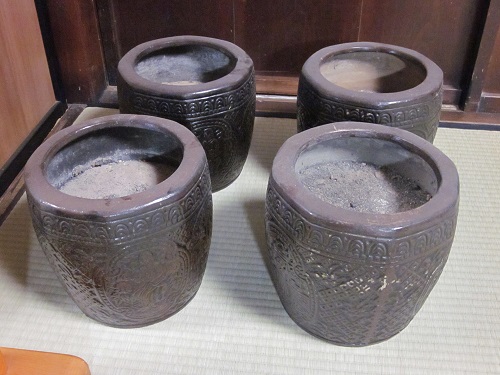 These are braziers (Hibachi) that warms up in the room.
These are braziers (Hibachi) that warms up in the room.
Charcoal fire was placed on the ash in the brazier and burned.
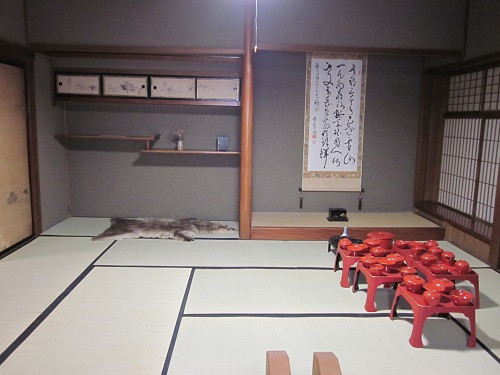 This is Okudee with tatami mats (10 tatami mats).
The ceiling is a board and batten ceiling (Saobuchitenjo),
and fusuma and shoji doors are erected in the partition.
There is a alcove (Tokonoma) in the front and a alcove post (Tokobashira)
in the center.
A hanging scroll (Kakejiku) is hung on the right side.
On the left is a set of staggered shelves (Chigaidana), Ten bukuro,
and on the tatami mats is an antelope fur covering.
This is Okudee with tatami mats (10 tatami mats).
The ceiling is a board and batten ceiling (Saobuchitenjo),
and fusuma and shoji doors are erected in the partition.
There is a alcove (Tokonoma) in the front and a alcove post (Tokobashira)
in the center.
A hanging scroll (Kakejiku) is hung on the right side.
On the left is a set of staggered shelves (Chigaidana), Ten bukuro,
and on the tatami mats is an antelope fur covering.
At ceremonial occasions and gatherings,
they removed the partition doors of Nakanoma, Dee, Butsuma, and Okudee
and used it as a large hall.
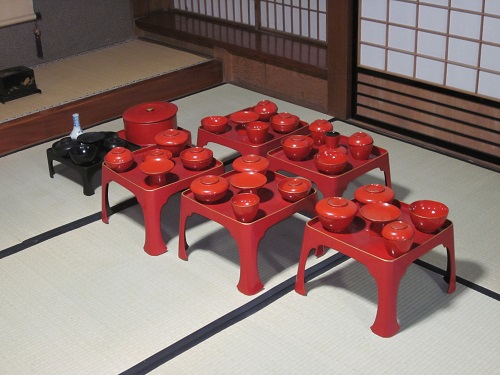 These are lacquered (Nurimono) small dining tables (Zen) and tableware
used for ceremonial occasions.
These are lacquered (Nurimono) small dining tables (Zen) and tableware
used for ceremonial occasions.
June 3rd: Cooking Stove (Kamado)
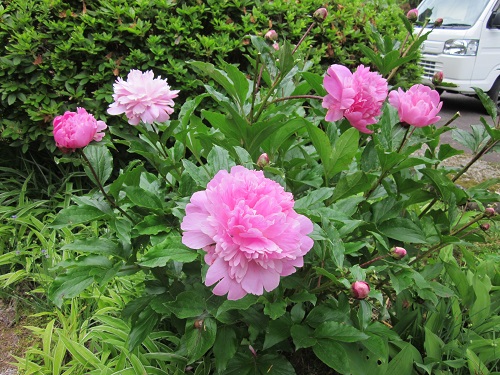 The peony flowers were blooming beautifully.
The peony flowers were blooming beautifully.
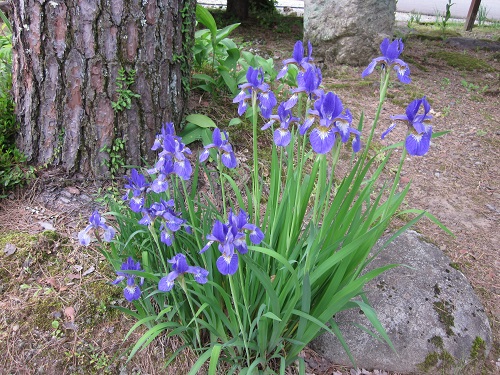 Purple irises were in bloom.
Purple irises were in bloom.
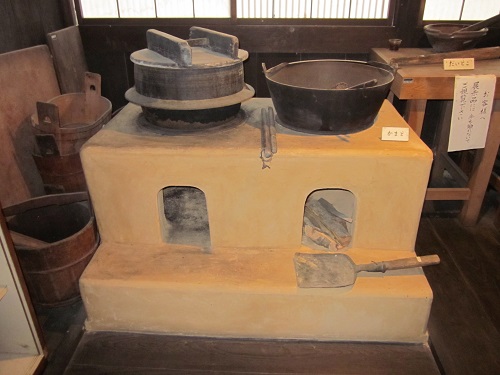 This is a Cooking Stove (Kamado) that is cooked by burning firewood.
This is a Cooking Stove (Kamado) that is cooked by burning firewood.
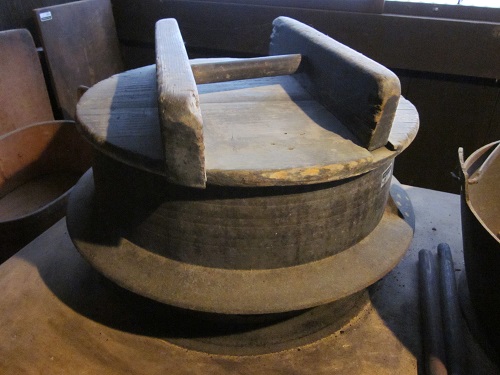 This is a Hagama for cooking rice.
There is a thick wooden lid on it.
This is a Hagama for cooking rice.
There is a thick wooden lid on it.
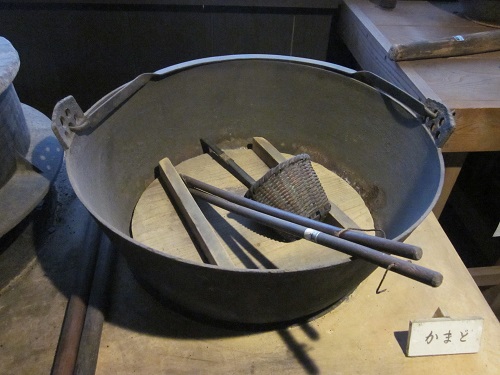 This is a pot made of casting that cooks food.
This is a pot made of casting that cooks food.
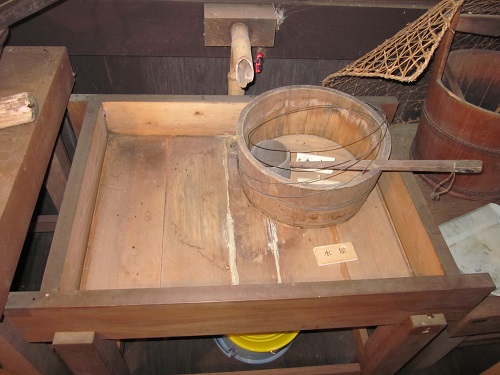 This is a wooden sink that washes dishes and ingredients.
This is a wooden sink that washes dishes and ingredients.
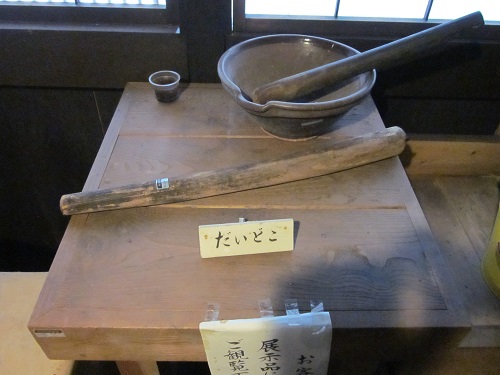 This is a wooden Daidoko.
This is a wooden Daidoko.
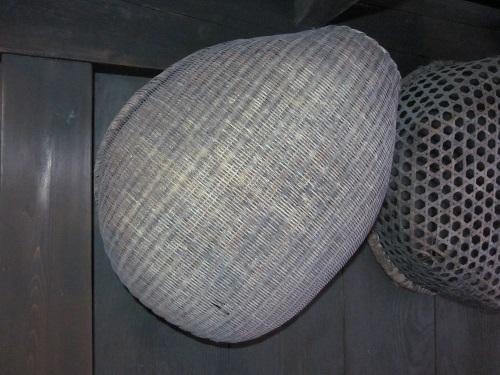 This is a rice colander that is used to wash and put rice in before cooking rice.
This is a rice colander that is used to wash and put rice in before cooking rice.
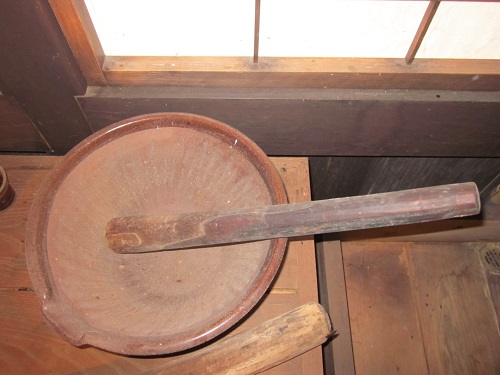 This is a mortar and a wooden pestle that grind beans, perilla, etc.
This is a mortar and a wooden pestle that grind beans, perilla, etc.
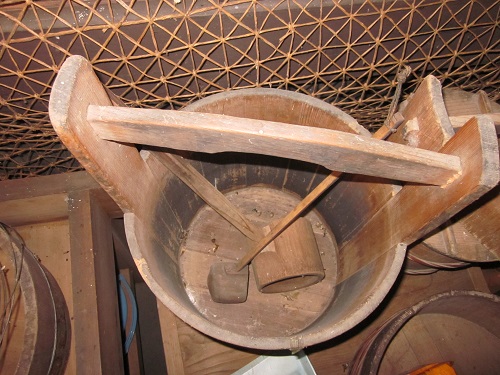 This is a bucket and a ladle for water.
This is a bucket and a ladle for water.
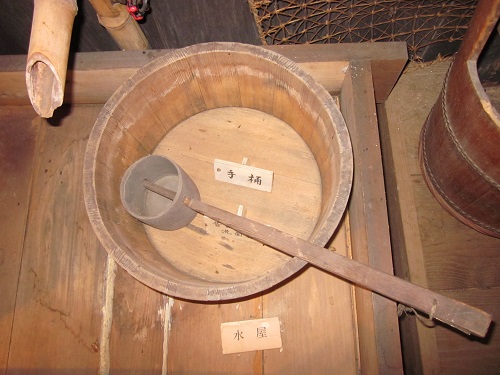 This is a tub and a ladle.
This is a tub and a ladle.
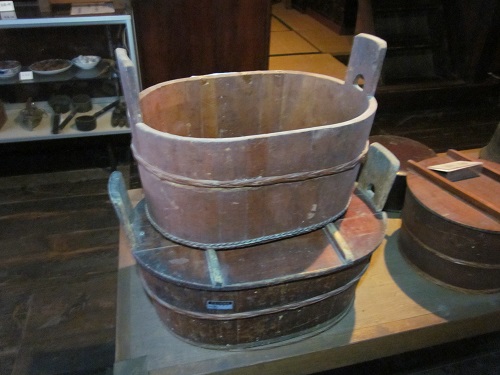 These are big Ohitsu that puts cooked rice.
These are big Ohitsu that puts cooked rice.
There were large families, so they used big Ohitsu.
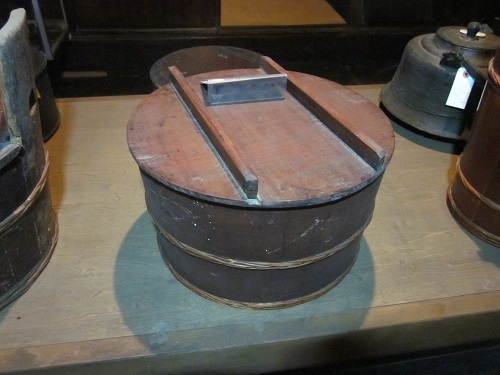 This is a small Ohitsu that puts cooked rice.
This is a small Ohitsu that puts cooked rice.
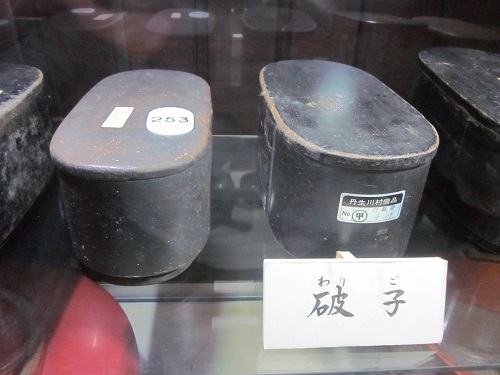 Warigo is a lunch box made by bending a thin sheet of cypress.
Warigo is a lunch box made by bending a thin sheet of cypress.
They also filled the lid with rice to make two servings.
June 3rd: Keep Silkworms
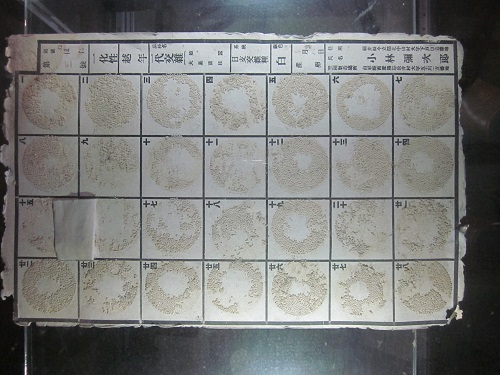 This is a silkworm egg card of the mount on which the eggs of silkworms are laid.
This is a silkworm egg card of the mount on which the eggs of silkworms are laid.
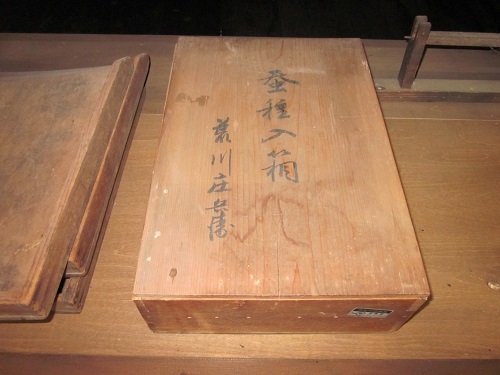 This is a silkworm eggs box that contains silkworm eggs.
This is a silkworm eggs box that contains silkworm eggs.
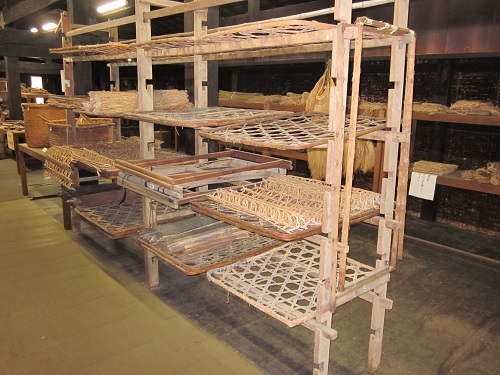 This is a silkworm shelf which passed a horizontal bar
to the half moon hole of the pillar.
This is a silkworm shelf which passed a horizontal bar
to the half moon hole of the pillar.
(Height 2m35cm, Width 3m21cm, Depth 53cm, Number of steps 11)
Place Sampak (silkworm basket) on this horizontal bar.
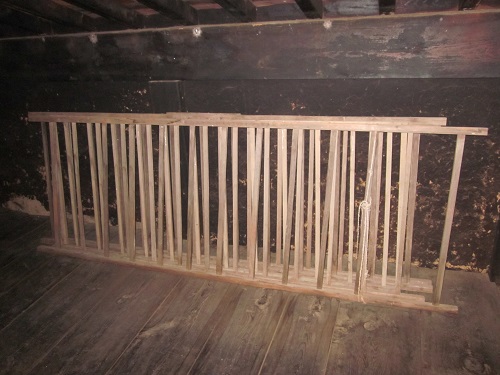 These are ladder-shaped silkworm shelfs.
These are lying down, but they use it upright. (4 units overlap)
These are ladder-shaped silkworm shelfs.
These are lying down, but they use it upright. (4 units overlap)
(Height 2m40cm, Width 92cm, Number of steps 13)
Place the Sampak (silkworm basket) on the horizontal bar.
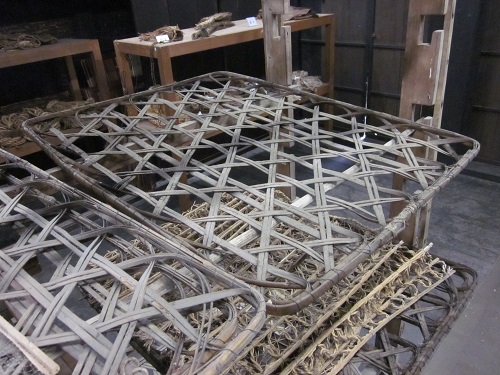 These are Sampak (silkworm basket) that breeds silkworms.
It is a square-shaped flat basket. (90cm×70cm)
These are Sampak (silkworm basket) that breeds silkworms.
It is a square-shaped flat basket. (90cm×70cm)
Lay a Sanzashi (silkworm paper) on it and keep the silkworm on it.
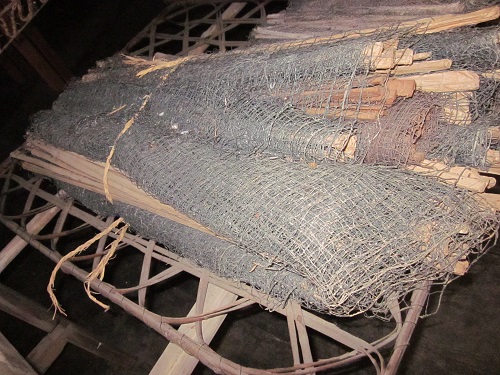 Silkworm nets (kaikoami) are bundled.
Silkworm nets (kaikoami) are bundled.
Spread the silkworm net and cover the Sampak (silkworm basket) with it.
And give mulberry leaves on it, the silkworm passes through the net and goes up.
Lift and move the silkworm net on which the silkworms are placed,
and clean the feces left on the Sampak (silkworm basket)
and the mulberry leaves left uneaten.
As for the mesh of the silkworm net, the one that is gradually larger is
used due to the growth of the silkworm.
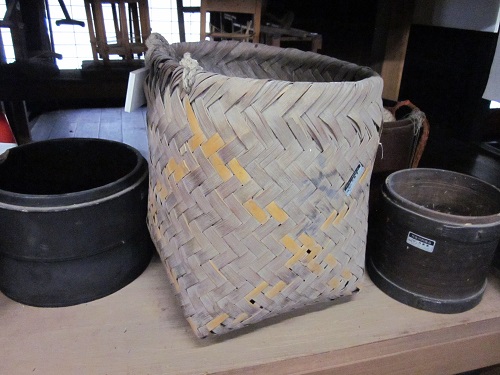 This is a Kuwamoriajika (basket) that picks and puts mulberry leaves.
(Diameter 30 cm, Depth 36 cm)
This is a Kuwamoriajika (basket) that picks and puts mulberry leaves.
(Diameter 30 cm, Depth 36 cm)
It is used by attaching it to the waist.
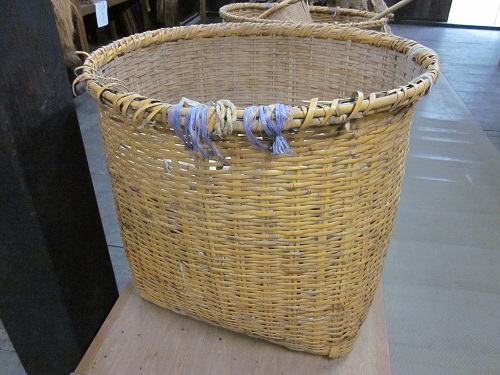 This is a Kuwairekoza (basket) that puts a lot of mulberry leaves.
This is a Kuwairekoza (basket) that puts a lot of mulberry leaves.
(Diameter 60 cm, depth 53 cm)
They put many cups of mulberry leaves harvested with Kuwamoriajika in Kuwairekoza
and carried it to their house when it was full.
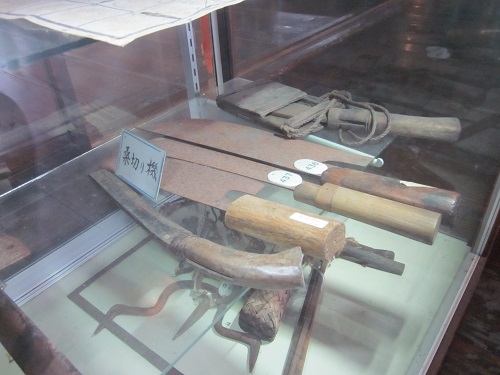 These are mulberry cutting knife that cuts mulberry leaves into small pieces.
These are mulberry cutting knife that cuts mulberry leaves into small pieces.
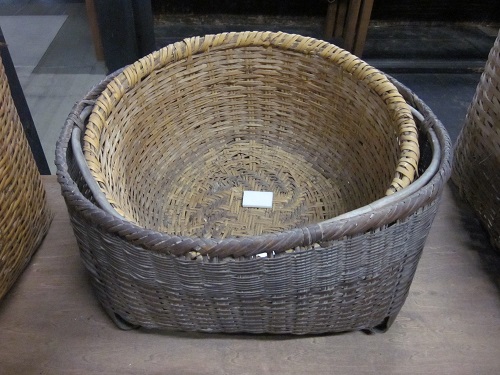 These are Kuwairekago (mulberry basket) to put the cut mulberry leaves.
These are Kuwairekago (mulberry basket) to put the cut mulberry leaves.
They put mulberry leaves in a Kuwairekago (mulberry basket) and gave it to silkworms.
When they gave mulberry leaves to the silkworms, they started eating all at once,
and the sound of eating like rain was echoing throughout the room.
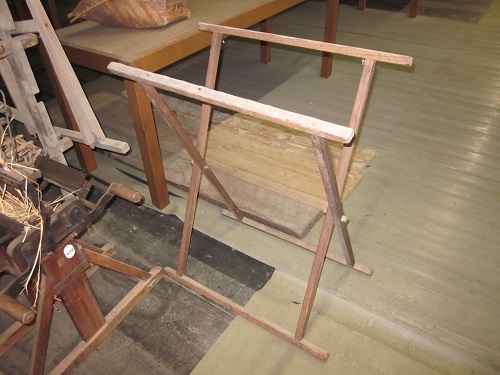 This is a Kyusoudai (mulberry leaves feeding stand) that puts Sampak
(silkworm basket). (Length 93 cm, width 70 cm)
This is a Kyusoudai (mulberry leaves feeding stand) that puts Sampak
(silkworm basket). (Length 93 cm, width 70 cm)
The Sampak (silkworm basket) was placed on the Kyusoudai
(mulberry leaves feeding stand) and give it mulberry.
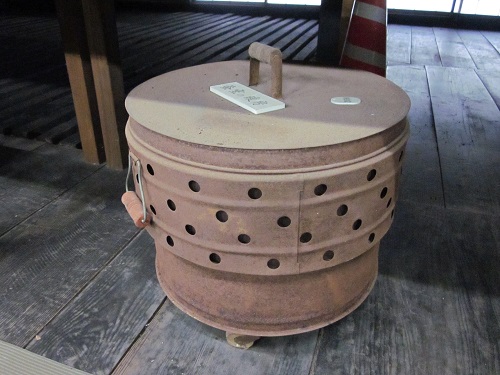 This is a silkworm room fireplace used when the temperature is low.
Charcoal fire and briquettes were used.
This is a silkworm room fireplace used when the temperature is low.
Charcoal fire and briquettes were used.
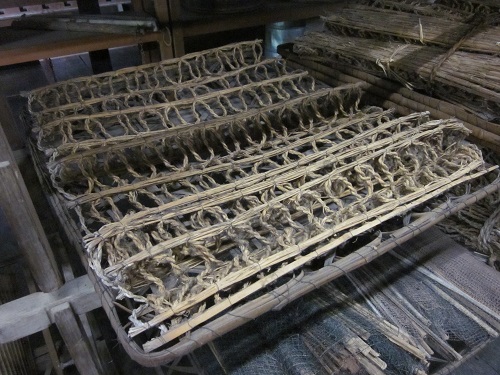 The mature silkworms are transferred to Mabushi (cocoon holders) to make cocoons.
The mature silkworms are transferred to Mabushi (cocoon holders) to make cocoons.
There are several types of Mabushi (cocoon holders).
This is an improved Oriwara-Mabushi.
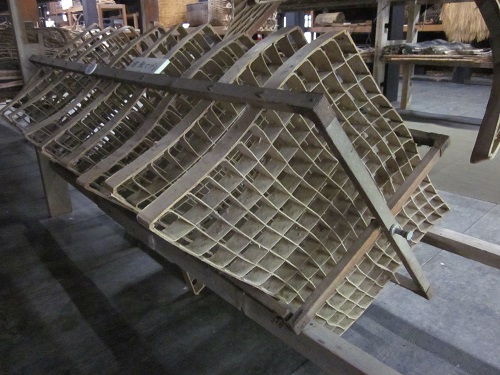 These are rotating Mabushi (cocoon holders).
These are rotating Mabushi (cocoon holders).
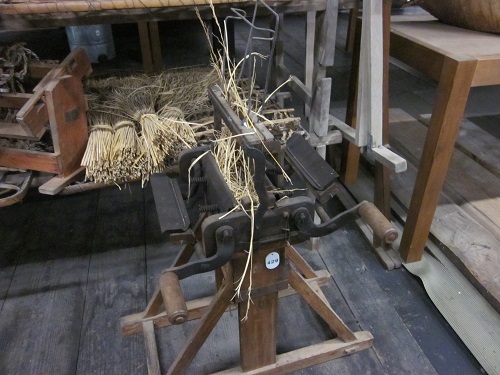 This is a Waramabushioriki (straw cocoon holders folding machine)
that makes Oriwaramabushi (straw folding cocoon holders).
This is a Waramabushioriki (straw cocoon holders folding machine)
that makes Oriwaramabushi (straw folding cocoon holders).
The straw was put upright in a plate shape,
and the left and right handles were held by hand,
and the straw was folded alternately to make the Mabushi (cocoon holders).
When they made one new Mabushi,
the previous Mabushi was extruded from the bottom and came out.
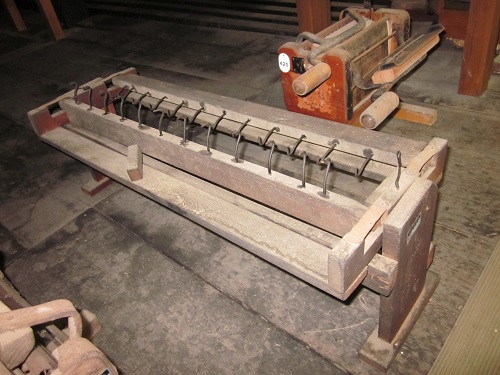 This is Seizokuki that
makes Kairyooriwaramabushi (improved straw folding cocoon holders).
This is Seizokuki that
makes Kairyooriwaramabushi (improved straw folding cocoon holders).
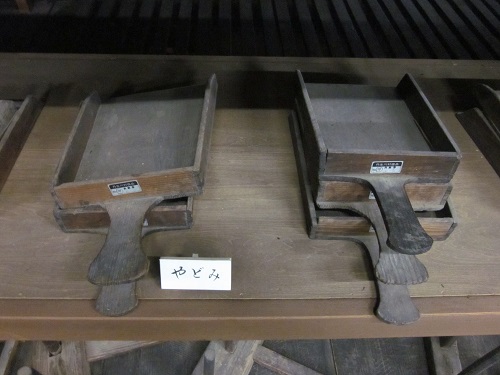 These are Yadomi (silkworm box) that carries mature silkworms
to the Mabushi (cocoon holders).
These are Yadomi (silkworm box) that carries mature silkworms
to the Mabushi (cocoon holders).
(Mature silkworm: After 4 sleeps, the body becomes transparent
without eating leaves.)
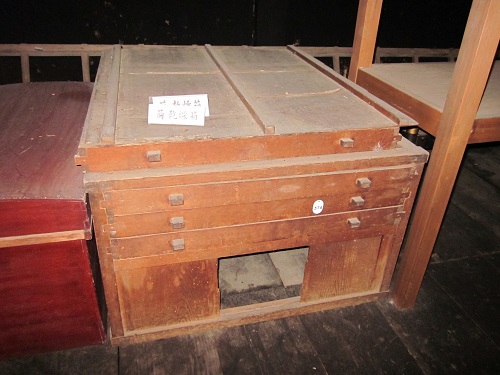 This is Hoilo (cocoon drying box) for killing pupae of raw cocoons.
This is Hoilo (cocoon drying box) for killing pupae of raw cocoons.
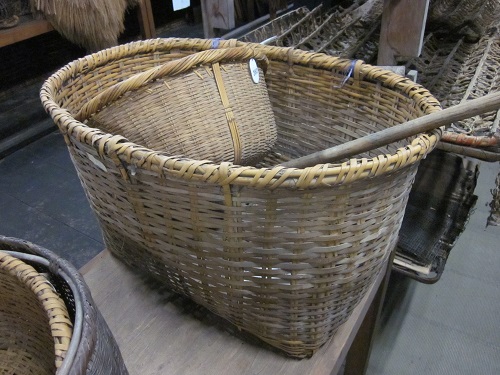 This is a cocoon transport Koza (basket) that carries cocoons.
This is a cocoon transport Koza (basket) that carries cocoons.
(Diameter 72 x 52 cm, depth 42 cm)
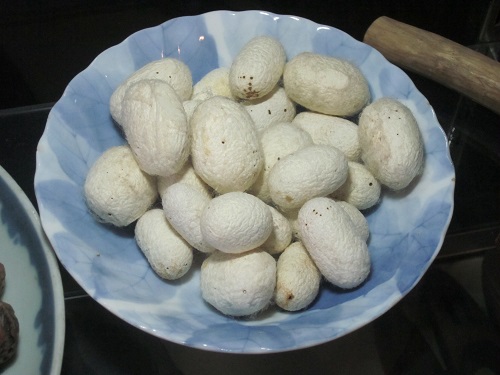 These are samples of the cocoons.
These are samples of the cocoons.
Back
<< Home < Back Next >